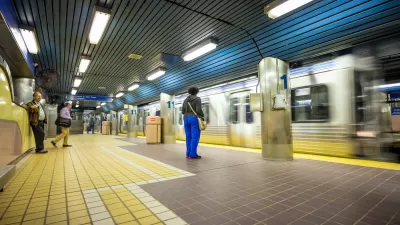Neighborhood Improvement Districts in Philadelphia are facing challenges from a skeptical public for the first time since their introduction over 20 years ago, Alex Vuocolo reports.
Historically, Neighborhood Improvement Districts (NIDs) have a strong track record in Philadelphia. In the 22 years since the designation was first introduced there, the districts – which levy additional property taxes within a defined area to fund improvements – have generally been well-received.
But just within the last year, two proposals for NIDs have been beleaguered with objections in "heated public hearings and petitions." The problem, Vuocolo notes, is that the proposed NIDs encompass broad, nebulous areas that lack the cohesion of distinct neighborhoods – and thus, the commitment of residents to invest in the area as a whole.
The more recent of the two, dubbed the North Central Neighborhood Improvement District (NCNID), tested the already-strained relationship between Temple University and its neighbors. "According to Nick Pizzola of The Temple Area Property Associations, an NID
is the best option to help clean up the area and fund increased
security measures to deal with the ongoing tensions between longtime
neighborhood residents and an ever-revolving crop of students," writes Vuocolo.
In light of these obstacles, Karen Fegely, Director of the city's Office of Neighborhood Economic Development, is preparing a "how-to" guide to ensure that NIDs are better-conceived and presented in the future. Elemental to the process, she points out, is transparency: "It comes down to communication."
Indeed, Pizzola says of NCNID, "There is a sense that that it was a backroom deal."
FULL STORY: Special Taxing Districts Meet Resistance in Philly

Alabama: Trump Terminates Settlements for Black Communities Harmed By Raw Sewage
Trump deemed the landmark civil rights agreement “illegal DEI and environmental justice policy.”

Planetizen Federal Action Tracker
A weekly monitor of how Trump’s orders and actions are impacting planners and planning in America.

The 120 Year Old Tiny Home Villages That Sheltered San Francisco’s Earthquake Refugees
More than a century ago, San Francisco mobilized to house thousands of residents displaced by the 1906 earthquake. Could their strategy offer a model for the present?

In Both Crashes and Crime, Public Transportation is Far Safer than Driving
Contrary to popular assumptions, public transportation has far lower crash and crime rates than automobile travel. For safer communities, improve and encourage transit travel.

Report: Zoning Reforms Should Complement Nashville’s Ambitious Transit Plan
Without reform, restrictive zoning codes will limit the impact of the city’s planned transit expansion and could exclude some of the residents who depend on transit the most.

Judge Orders Release of Frozen IRA, IIJA Funding
The decision is a victory for environmental groups who charged that freezing funds for critical infrastructure and disaster response programs caused “real and irreparable harm” to communities.
Urban Design for Planners 1: Software Tools
This six-course series explores essential urban design concepts using open source software and equips planners with the tools they need to participate fully in the urban design process.
Planning for Universal Design
Learn the tools for implementing Universal Design in planning regulations.
Clanton & Associates, Inc.
Jessamine County Fiscal Court
Institute for Housing and Urban Development Studies (IHS)
City of Grandview
Harvard GSD Executive Education
Toledo-Lucas County Plan Commissions
Salt Lake City
NYU Wagner Graduate School of Public Service



























